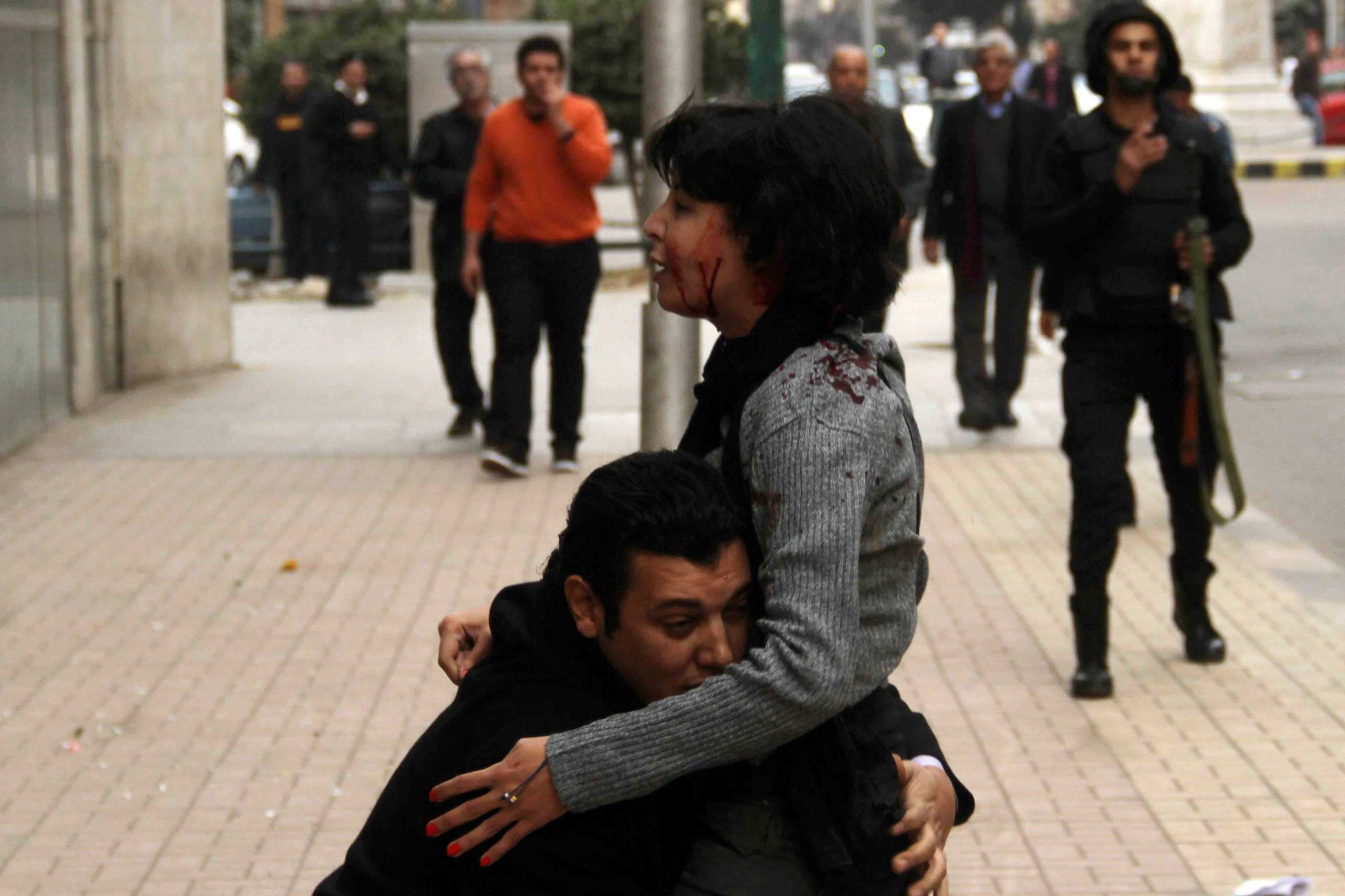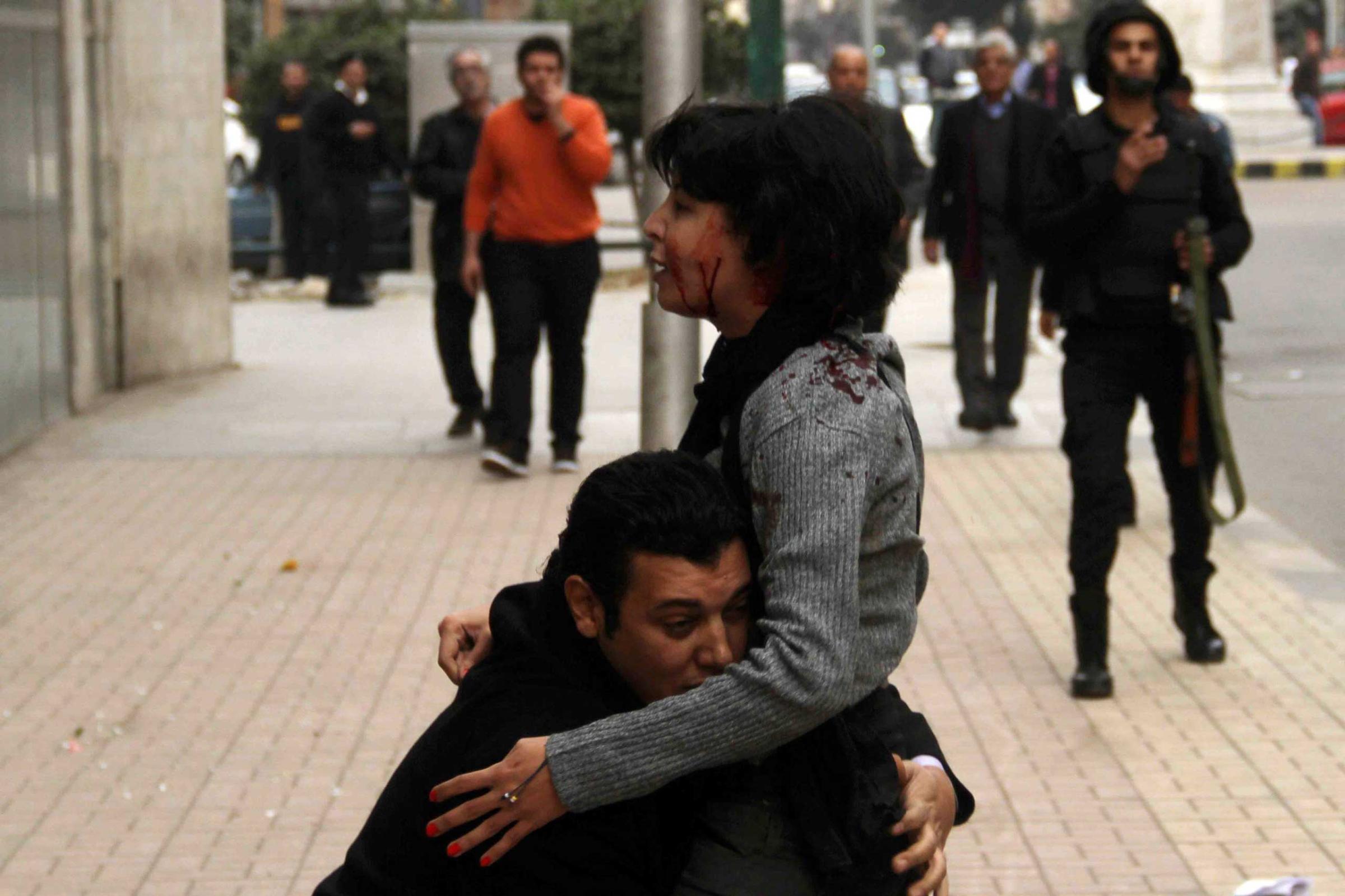
In the week since her death, Shaimaa al-Sabbagh has become a symbol against Egypt’s military rule.
The leading member of the Socialist Popular Alliance Party died on Jan. 24 after suffering shotgun pellet injuries while peacefully marching to commemorate the hundreds of demonstrators killed during the Arab Spring uprising of 2011.
Egyptian photographer Islam Osama, 23, captured her dying moments. His powerful portrait of Sayyed Abu el-Ela holding the severely injured protestor has drawn international attention, taking on an iconic status similar to the footage of Neda Agha-Soltan’s dying breath during the 2009 Iranian protests.
Osama, a photojournalist with the Egyptian Youm El Sabea newspaper, was covering a press conference in Cairo when he heard about the Socialist Popular Alliance Party’s march, and headed over to cover it. “It was an ordinary day,” Osama told TIME. “We didn’t expect any clashes or violence from the police. The streets were almost empty.”
The march was on one side of a street leading to the iconic Tahrir Square, and the police stood on the other side. “[There were] only 25 people, and the demonstration only lasted two minutes,” Osama said. “Suddenly, without any warning, the dispersal began with the shooting of teargas and birdshot [pellets].”
Osama believes the police didn’t purposefully target Al-Sabbagh. “[They] fired in the general direction of the march.” The photographer, who was behind Al-Sabbagh when she was hit, saw her fall to the ground. He took six photos in a sequence.
At first, Osama didn’t realize he had captured such a powerful image. “The most important thing in that moment was Shaimaa herself,” he said. “I realized immediately that I had to leave. I had to send the photos to the newspaper, fast. If I waited a moment too long there was a chance that my camera could be taken and the memory card erased by the police.”
Using a USB data dongle and his laptop, he uploaded the photographs to his editor at Youm El Sabea. “From a human perspective, [my editor] had a strong emotional reaction to the image,” which has dominated the paper’s coverage since the incident.
Osama never expected to see his photograph make international headlines. “It was a big surprise,” he said. “I didn’t expect this kind of reaction. When I see this, of course I feel proud. But the most important thing is that I was able to bring Shaimaa’s message to the world… As a photographer, it’s my job to transmit this reality to the world.”
And, the current political situation in Egypt hasn’t made his job easy. “Photojournalists [here] are not safe. If you carry a camera in the street, you’re a target. People consider anyone with a camera [to be] with Al Jazeera, the Muslim Brotherhood, or a traitor to the nation.”
For Osama, his job is not to take sides, he said. “I’m not against the police. I’ve photographed policemen who [were] injured and killed, who [were] targeted by terrorism. My photos show reality.”
Interview by Jared Malsin in Cairo

More Must-Reads From TIME
- The 100 Most Influential People of 2024
- Coco Gauff Is Playing for Herself Now
- Scenes From Pro-Palestinian Encampments Across U.S. Universities
- 6 Compliments That Land Every Time
- If You're Dating Right Now , You're Brave: Column
- The AI That Could Heal a Divided Internet
- Fallout Is a Brilliant Model for the Future of Video Game Adaptations
- Want Weekly Recs on What to Watch, Read, and More? Sign Up for Worth Your Time
Contact us at letters@time.com